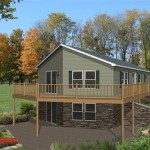Water Entering Basement From Outside: Essential Aspects to Consider
In the context of home maintenance, preventing water infiltration into basements is a crucial aspect to ensure a dry and habitable living space. Water seepage from outside sources can pose a significant threat to the structural integrity and overall well-being of a house.
Understanding the primary sources and points of entry for water is essential in developing effective strategies for waterproofing. External factors such as heavy rainfall, snowmelt, and poor drainage systems can contribute to basement flooding.
To effectively address water entering the basement from outside, it is imperative to identify the specific vulnerabilities and implement appropriate measures. Here are several essential aspects to consider:
1. Foundation Cracks and Walls
Cracks in foundation walls, whether due to structural settling or external pressure, provide pathways for water to penetrate. Inspect the foundation walls thoroughly for any visible cracks, gaps, or spalling.
2. Drainage System
An inadequate drainage system around the house can lead to water accumulation near the foundation, increasing the risk of seepage. Gutters and downspouts should be properly maintained and directed away from the house, while grading the soil to slope away from the foundation helps prevent water buildup.
3. Landscaping
Overgrown vegetation, dense bushes, and trees planted too close to the house can obstruct water flow and trap moisture against the foundation. Regularly trim vegetation and ensure proper spacing to promote drainage.
4. Window Wells
Window wells provide ventilation and natural light to basement windows, but they can also be a potential entry point for water. Inspect window wells for cracks, gaps, or missing covers. Install a drainage system within the wells to redirect water away from the foundation.
5. Sump Pumps
Sump pumps are essential in areas with high groundwater levels or frequent flooding. These pumps automatically remove excess water from the basement and discharge it away from the house.
6. Waterproofing Membranes
Applying a waterproofing membrane to the exterior of foundation walls can effectively prevent water渗透. These membranes provide a barrier that prevents moisture from reaching the basement's interior.
Addressing water entering the basement from outside requires a systematic approach that involves identifying and sealing potential entry points, improving drainage, and installing appropriate waterproofing measures. By understanding these essential aspects, homeowners can ensure a dry and protected basement.

How To Stop Water From Coming Up Through The Basement Floor

Why Is Water Coming Into My Basement Between Wall And Floor

7 Ways To Stop Rain Leaking Into Your Basement Baker S Waterproofing

Why Is Water Coming In Basement Where Walls Meet Floor

Why Is Water Coming Into My Basement Between Wall And Floor

What Is Exterior Basement Waterproofing And Why Do You Need It

How Water Seepage Can Affect Your Home S Foundation

Water Leaking Into Basement After Heavy Rain How To Stop It

Exterior Basement Waterproofing Kansas City Foundation 1

How Landscaping Can Prevent Water From Getting Into Your Basement
See Also








